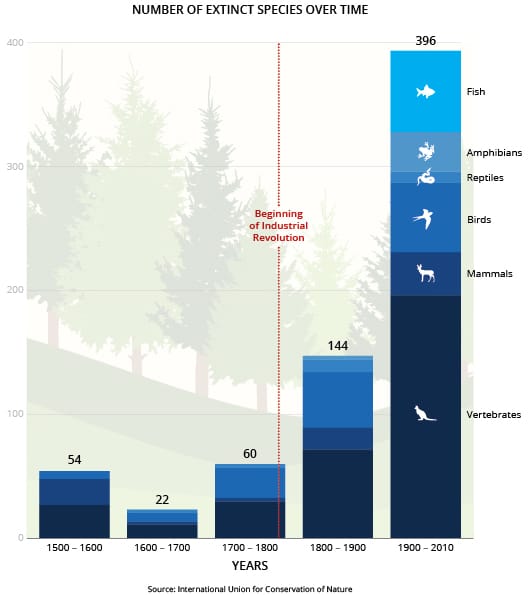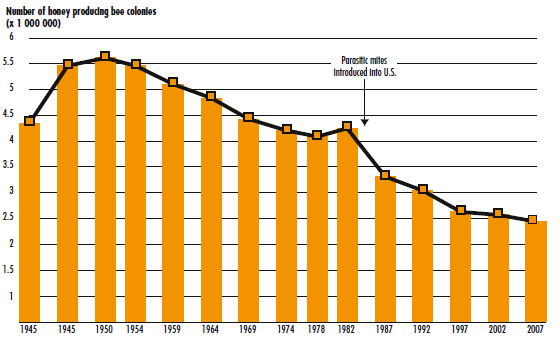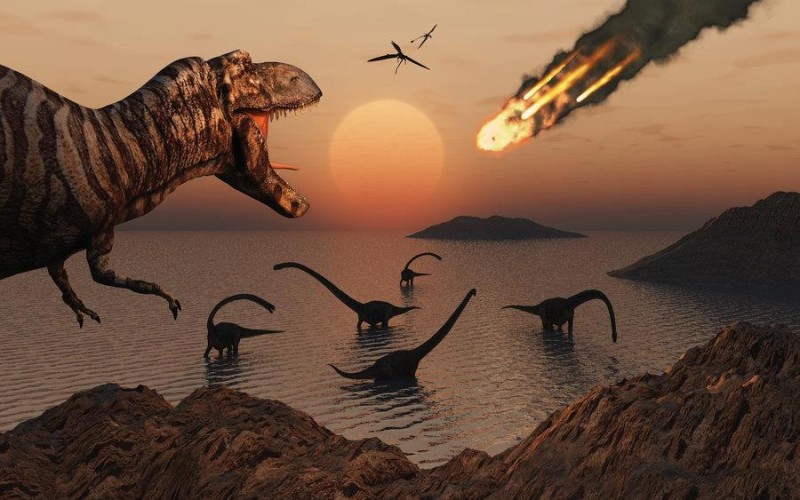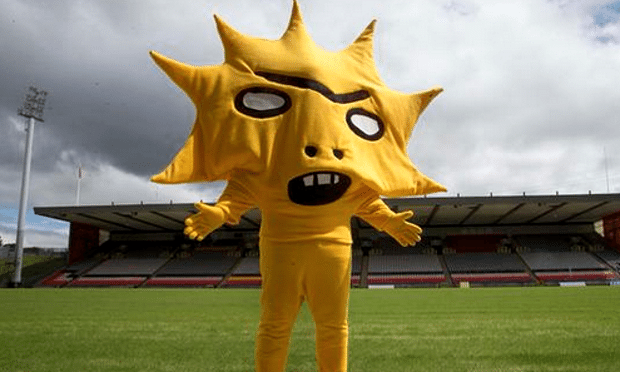You’ve probably read a load of conspiracy theories about meteors heading our way etc, but according to a new study by top scientists reported by Stanford University, we may already be well on our way to extinction. This study proves with certainty that the earth is currently experiencing a mass extinction event – the sixth which our planet has experienced, and the largest since the dinosaurs died out 66 million years ago.
Even with conservative estimates, the study shows that species are disappearing 100 times faster than the normal rate between mass extinctions (which is known as the background rate).
Take a look at this chart from Standford University, which shows the huge spike in extinctions over the past 100 years.

According to the study, the threat of extinction currently extends to 41% of all amphibian species and 26% of all mammals (including us humans).
It may seem far fetched, but the earth is a complex planet, and the loss of just one species can have a devastating effect on all other species. The bee population (which has been steadily declining – see chart below) is a particular worry, as without their crop pollination, our food supply could be devastated.

“There are examples of species all over the world that are essentially the walking dead. As species disappear, so do crucial ecosystem services such as honeybees’ crop pollination and wetlands’ water purification. At the current rate of species loss, people will lose many biodiversity benefits within three generations. We are sawing off the limb that we are sitting on.”
The only way to reverse the trend is for us to focus on conserving natural habitats, and protecting threatened species. The video below explains more about the huge, and very real threat we face as a species.
It is within our power to reverse this trend and save our planet, but will we do so before it’s too late?




